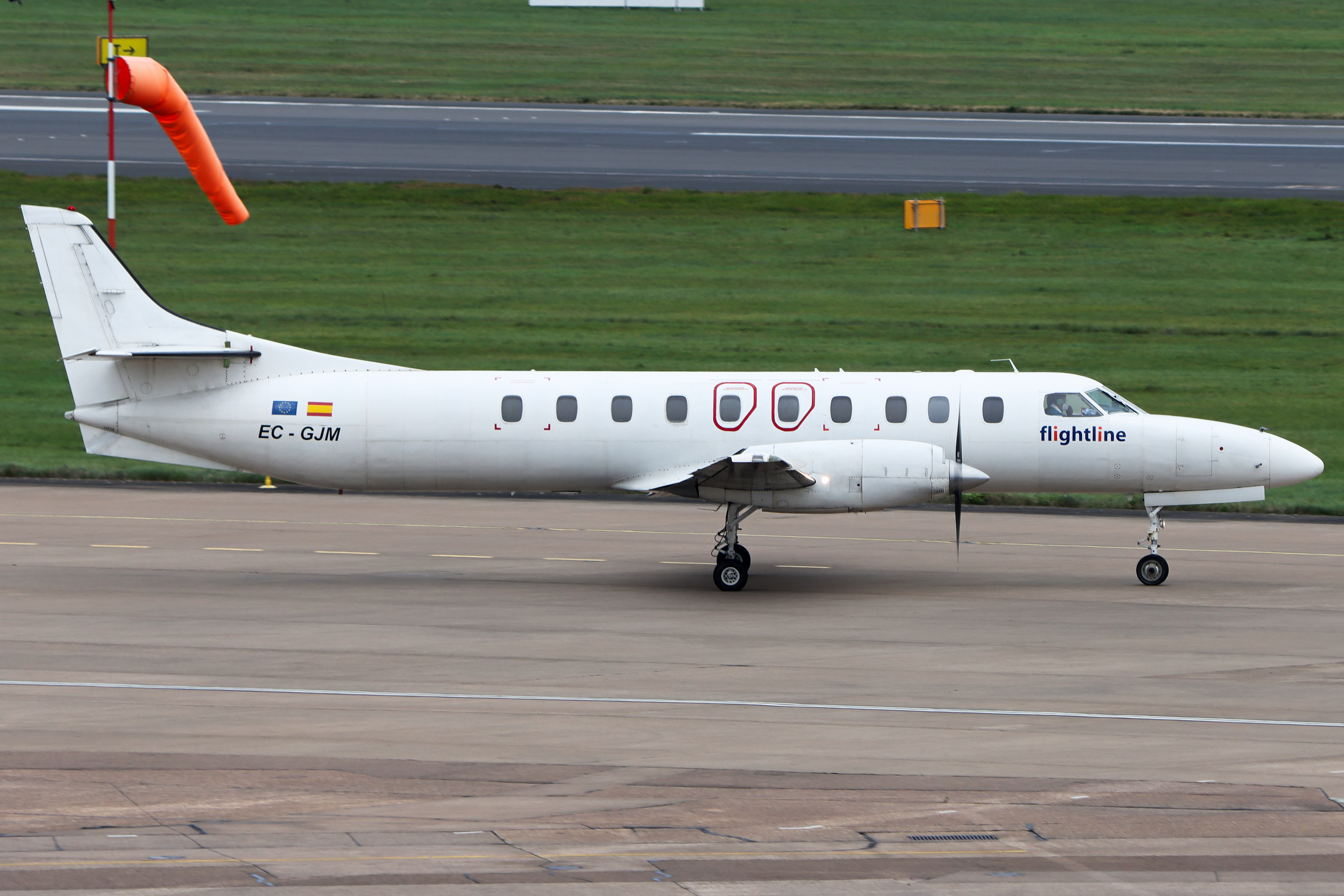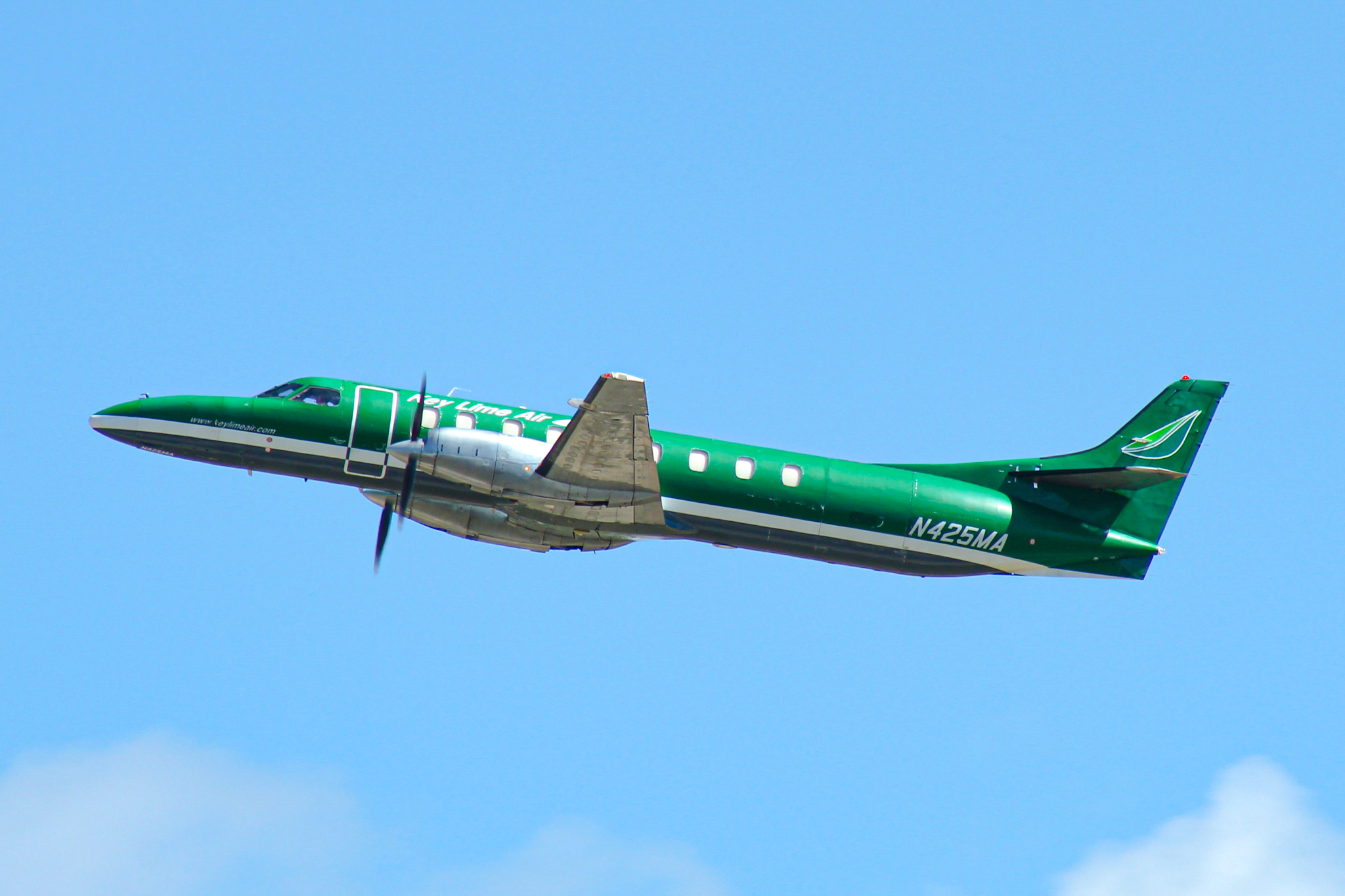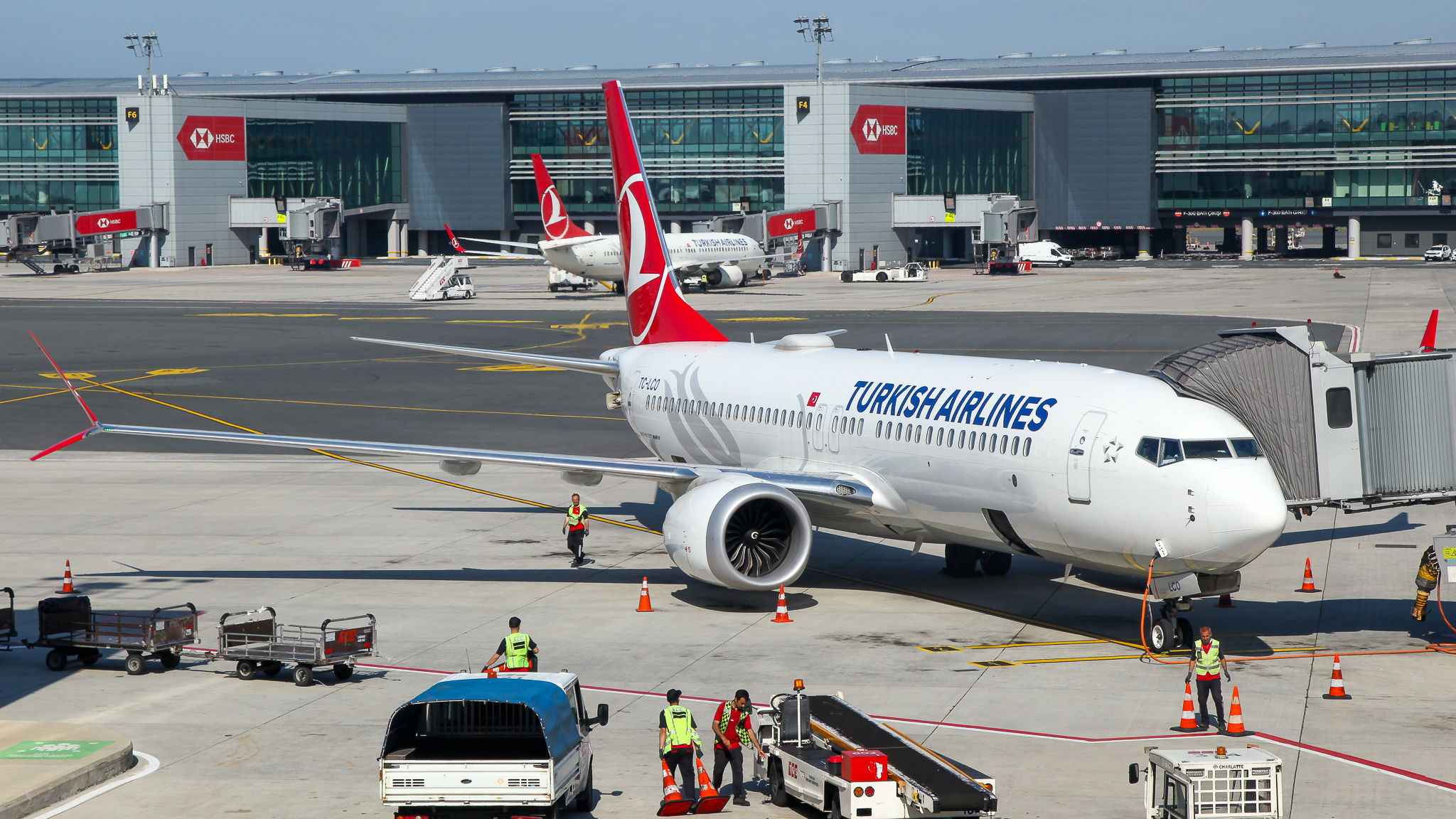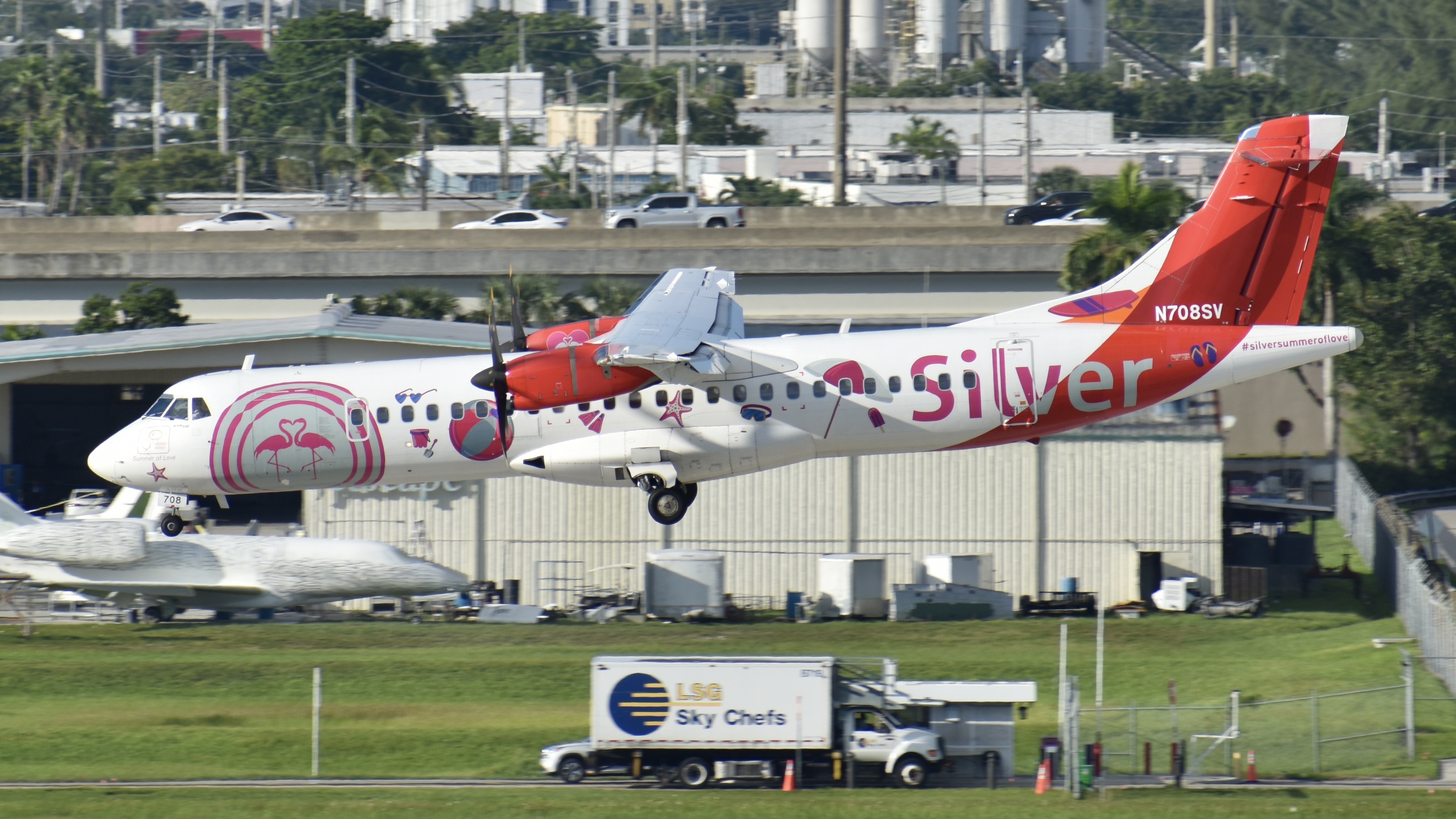Disclaimer: I am in no way talking bad about the company’s culture, employees or its pilots abilities. In fact, Key Lime pilots are widely considered to be some of the best in the industry. I’m simply pointing out the dangers of flying single-pilot IFR in a complicated airplane across some of the nation’s toughest terrain. It’s also important to note that not all of Key Lime Air’s operations are single-pilot, however the majority of cargo operations are single-pilot.
Picture this: You’re the single pilot of a Fairchild Swearingen Metroliner (Metroliner), a complex twin-engine turboprop flying over the turbulent Rocky Mountains of Colorado without an autopilot. It’s pitch dark outside, you’re in low visibility, and you’re relying solely on the instruments of the out of date airplane, which isn’t equipped with GPS. It need not be repeated the inherent risks of such a proposition and the extreme underlying hazards associated with it. Yet, Key Lime Air, which is a regional charter and UPS cargo feeder, does just that.
For starters, the Metroliner is a notoriously complicated and “squirrly” airplane to fly. Referred by many within the industry as “the flying pencil,” the Metroliner has built up quite a reputation for its bizarre flight characteristics. Twin engine turboprops are typically designed for flight on one engine, but not the Metroliner. If one of the two engines were to fail on takeoff or landing, it may not be possible to meet a successful end to the flight unless the engine out procedures are followed to a tee, something that pilots don’t always do when faced with this stressful situation. Mark Huber, a pilot and journalist alike stated in a 2015 article regarding the Metroliner, “In pilot speak, this is an ‘“unforgiving”’ airplane—fast with a high workload.” Huber continued, noting, “You can fly the airplane single pilot, but unless your captain is at the top of his or her game and has a ton of experience in it, that’s probably a bad idea.”

In addition to the strenuous workload imposed on the pilot by the Metroliner, the lack of an autopilot and the inability of the airplane to fly GPS approaches makes it much more dangerous. When you’re flying in the clouds or reduced visibility, hand-flying the aircraft becomes much harder given the difficulty of overcoming the numerous spatial disorientations that have plagued pilots for centuries. Spatial disorientation occurs when the pilot has no reference to the outside horizon, and consequently has no visual reference to the attitude (where the plane is pointed) of the airplane. Spatial disorientation only occurs in 5-10% of accidents, but 90% of these accidents are fatal. These accidents are typically alleviated with a functional autopilot, sufficient Instrument training, and another pilot on board the aircraft. Key Lime Air, however, contains none of these safety barriers. Coupled with the risk of the inability of the airplane to fly the increasingly modern GPS type approaches, it’s easy to find the plethora of problems waiting to happen.
Flying as a single pilot is much more dangerous than two pilots in the cockpit. According to data published by the National Transportation Safety Board (NTSB) from 2009-2018, single-pilot operations accounted for six times more loss of control in flight accidents, which are the leading fatal accidents in the industry. Furthermore, single-pilot operations are putting the pilot under higher stress, fatigue and propensity towards worse overall decision making. The high workload environment leads to accidents, one of which occurred on December 5, 2016 aboard Key Lime Air flight 308 en route from Panama City-Northwest Florida Beaches International Airport (ECP) to Albany-Southwest Georgia Regional Airport (ABY). The NTSB reported that the probable cause of the accident was the pilot's decision to initiate and continue the flight into known adverse weather conditions, resulting in spatial disorientation, loss of airplane control, and a subsequent in-flight breakup. The pilot flying the Metroliner was 39 years old, and boasted an impressive 8,451 total hours—4,670 being in the Metroliner. That is what makes this particular accident so terrifying. Even an experienced pilot can fall victim to the external pressures that played a role in him making the decision to depart into poor weather conditions. Without the assistance of an autopilot or a copilot, the pilot met a fatal end.

These factors play a role in Key Lime Air’s unusually poor safety record. From 2000 to 2007, the company had already experienced six crashes and seven fatalities. Since then, the accident rate seems to have slowed a bit, although the airline has still been involved in three more accidents with two fatalities. The culmination of flying a complicated airplane single-pilot in bad weather without the help of a copilot or automation is the perfect recipe for disaster.
Rescued Jeju Air Flight Attendant is Awake and Speaking, Hospital Official Reports » Manhunt Ensues After Passengers Flee Turkish Airlines Flight During Medical Diversion » The McDonnell Douglas DC-10: Dangerous or Misunderstood? »
Comments (32)
 kstl.spotter
wow! thanks for sharing!
kstl.spotter
wow! thanks for sharing!
 calvinaviationsfo
F
calvinaviationsfo
F
 midwest_aviation
this is a banging article
midwest_aviation
this is a banging article
 Panteley Shmelev
I likes the 'why Danny Devito is thick' joke !
Panteley Shmelev
I likes the 'why Danny Devito is thick' joke !
 Panteley Shmelev
Anyways my main question is where can I submit my article?
Panteley Shmelev
Anyways my main question is where can I submit my article?
 midwest_aviation
Go to the "article publisher" page on your dashboard, and fill out everything. Don't forget to press save if you exit, and publish when you're done!
midwest_aviation
Go to the "article publisher" page on your dashboard, and fill out everything. Don't forget to press save if you exit, and publish when you're done!
 jorgwinkler
Thanks for sharing this!
jorgwinkler
Thanks for sharing this!
 Escobia
Escobia
 canada pharmaceuticals online generic
Heya fantastic blog! Does running a blog similar to this take a great deal of work? I've very little expertise in computer programming but I had been hoping to start my own blog in the near future. Anyways, if you have any suggestions or techniques for new blog owners please share. I understand this is off subject nevertheless I simply needed to ask. Cheers!
canada pharmaceuticals online generic
Heya fantastic blog! Does running a blog similar to this take a great deal of work? I've very little expertise in computer programming but I had been hoping to start my own blog in the near future. Anyways, if you have any suggestions or techniques for new blog owners please share. I understand this is off subject nevertheless I simply needed to ask. Cheers!
 LeroyMum
visit this site https://orbiter-finance.at/2023/11/19/orbiter-finances-cross-rollup-bridge-aims-to-transform-interchain-communication-for-defi-ecosystem/
LeroyMum
visit this site https://orbiter-finance.at/2023/11/19/orbiter-finances-cross-rollup-bridge-aims-to-transform-interchain-communication-for-defi-ecosystem/
 Williamshife
look these up https://1inch-dex.com/2023/11/17/understanding-the-benefits-of-1inch-key-takeaways-from-the-whitepaper/
Williamshife
look these up https://1inch-dex.com/2023/11/17/understanding-the-benefits-of-1inch-key-takeaways-from-the-whitepaper/
 Jseraldfeest
May I simply say what a relief to uncover a person that actually understands what they're talking about on the internet. You actually know how to bring an issue to light and make it important. A lot more people should read this and understand this side of the story. I can't believe you're not more popular since you surely possess the gift.
http://newsbeautiful.ru/unikalnoe-obrazovanie-gde-priobresti-diplom-otvechayushhiy-tvoim-trebovaniyam/
https://forum.zub-zub.ru/viewtopic.php?t=25835
http://a90275db.beget.tech/2024/05/17/kupit-diplom-vash-shans-stat-luchshim-v-svoey-oblasti.html
Jseraldfeest
May I simply say what a relief to uncover a person that actually understands what they're talking about on the internet. You actually know how to bring an issue to light and make it important. A lot more people should read this and understand this side of the story. I can't believe you're not more popular since you surely possess the gift.
http://newsbeautiful.ru/unikalnoe-obrazovanie-gde-priobresti-diplom-otvechayushhiy-tvoim-trebovaniyam/
https://forum.zub-zub.ru/viewtopic.php?t=25835
http://a90275db.beget.tech/2024/05/17/kupit-diplom-vash-shans-stat-luchshim-v-svoey-oblasti.html
 JamesDieds
Explore Toronto's Wine Districts: A Guide to Local Vintages and Taste Experiences - [url=https://toronto-wine.netlify.app]https://toronto-wine.netlify.app[/url]
JamesDieds
Explore Toronto's Wine Districts: A Guide to Local Vintages and Taste Experiences - [url=https://toronto-wine.netlify.app]https://toronto-wine.netlify.app[/url]
 Rogerthuth
Discover Canada's Rich Wine Heritage and Culture | The Wine Story - [url=https://wine-clubs-canada.netlify.app]wine-clubs-canada.netlify.app[/url]
Rogerthuth
Discover Canada's Rich Wine Heritage and Culture | The Wine Story - [url=https://wine-clubs-canada.netlify.app]wine-clubs-canada.netlify.app[/url]
 Robeertmef
https://medmens.ru
Robeertmef
https://medmens.ru
 JoesphJal
Wine Class Toronto - [url=https://wine-class-toronto.blogspot.com]https://wine-class-toronto.blogspot.com[/url]
JoesphJal
Wine Class Toronto - [url=https://wine-class-toronto.blogspot.com]https://wine-class-toronto.blogspot.com[/url]
 RobertKix
A Comprehensive Guide to the History and Evolution of Wine Collecting - Wine Membership - [url=http://vino-school.wikidot.com]http://vino-school.wikidot.com[/url]
RobertKix
A Comprehensive Guide to the History and Evolution of Wine Collecting - Wine Membership - [url=http://vino-school.wikidot.com]http://vino-school.wikidot.com[/url]
 RicardoMex
Discover Canada's Rich Wine Heritage and Culture | The Wine Story - [url=https://wine-clubs-canada.netlify.app]wine-clubs-canada.netlify.app[/url]
RicardoMex
Discover Canada's Rich Wine Heritage and Culture | The Wine Story - [url=https://wine-clubs-canada.netlify.app]wine-clubs-canada.netlify.app[/url]
 pharmacies online
Your style is unique in comparison to other folks I've read stuff from. Thank you for posting when you have the opportunity, Guess I will just bookmark this blog.
pharmacies online
Your style is unique in comparison to other folks I've read stuff from. Thank you for posting when you have the opportunity, Guess I will just bookmark this blog.

 Lorenzonup
Explore Wine Subscription Services in Canada: Best Clubs, Features, and Benefits for Wine Enthusiasts - Wine Subscription Canada - [url=http://wine-lore-institute.wikidot.com]http://wine-lore-institute.wikidot.com[/url]
Lorenzonup
Explore Wine Subscription Services in Canada: Best Clubs, Features, and Benefits for Wine Enthusiasts - Wine Subscription Canada - [url=http://wine-lore-institute.wikidot.com]http://wine-lore-institute.wikidot.com[/url]
 BrockEnawl
Unveil Local Wine Scenes: A Journey into Regional Wine Adventures - Wine Clubs Nnear Me - [url=http://vinology-academy.wikidot.com]vinology-academy.wikidot.com[/url]
BrockEnawl
Unveil Local Wine Scenes: A Journey into Regional Wine Adventures - Wine Clubs Nnear Me - [url=http://vinology-academy.wikidot.com]vinology-academy.wikidot.com[/url]
 cialis pharmacy online
You really make it seem so easy with your presentation but I find this matter to be really something that I think I would never understand. It seems too complicated and very broad for me. I'm looking forward for your next post, I will try to get the hang of it!
cialis pharmacy online
You really make it seem so easy with your presentation but I find this matter to be really something that I think I would never understand. It seems too complicated and very broad for me. I'm looking forward for your next post, I will try to get the hang of it!
 Wallacenak
Unveil Local Wine Scenes: A Journey into Regional Wine Adventures - Wine Clubs Nnear Me - [url=http://vinology-academy.wikidot.com]http://vinology-academy.wikidot.com[/url]
Wallacenak
Unveil Local Wine Scenes: A Journey into Regional Wine Adventures - Wine Clubs Nnear Me - [url=http://vinology-academy.wikidot.com]http://vinology-academy.wikidot.com[/url]
 Robeertmef
https://tablove.ru
Robeertmef
https://tablove.ru
 Jseraldfeest
Hi there very cool blog!! Man .. Beautiful .. Wonderful .. I will bookmark your site and take the feeds additionally? I'm happy to find numerous useful info right here within the put up, we want develop more strategies in this regard, thank you for sharing. . . . . .
http://w98804oc.beget.tech/2024/05/17/diplom-na-vybor-vasha-individualnaya-doroga-k-professionalnomu-priznaniyu.html
http://shiba-inu.ru/forum/messages/forum1/topic381/message388/?result=new#message388
http://asg-amt.phorum.pl/viewtopic.php?p=32050#32050
Jseraldfeest
Hi there very cool blog!! Man .. Beautiful .. Wonderful .. I will bookmark your site and take the feeds additionally? I'm happy to find numerous useful info right here within the put up, we want develop more strategies in this regard, thank you for sharing. . . . . .
http://w98804oc.beget.tech/2024/05/17/diplom-na-vybor-vasha-individualnaya-doroga-k-professionalnomu-priznaniyu.html
http://shiba-inu.ru/forum/messages/forum1/topic381/message388/?result=new#message388
http://asg-amt.phorum.pl/viewtopic.php?p=32050#32050
 JamesBag
Wine Clubs Near Me - [url=https://wine-clubs-near-me.blogspot.com]wine-clubs-near-me.blogspot.com[/url]
JamesBag
Wine Clubs Near Me - [url=https://wine-clubs-near-me.blogspot.com]wine-clubs-near-me.blogspot.com[/url]
 tcndbgshnw
- AeroXplorer.com
tcndbgshnw http://www.g2qe7omt045645l7nm1h537be142nqvbs.org/
[url=http://www.g2qe7omt045645l7nm1h537be142nqvbs.org/]utcndbgshnw[/url]
<a href="http://www.g2qe7omt045645l7nm1h537be142nqvbs.org/">atcndbgshnw</a>
tcndbgshnw
- AeroXplorer.com
tcndbgshnw http://www.g2qe7omt045645l7nm1h537be142nqvbs.org/
[url=http://www.g2qe7omt045645l7nm1h537be142nqvbs.org/]utcndbgshnw[/url]
<a href="http://www.g2qe7omt045645l7nm1h537be142nqvbs.org/">atcndbgshnw</a>
 yhwtwejqrx
- AeroXplorer.com
yhwtwejqrx http://www.g6v5281d41dg26uvw6px650qh1ml5c9gs.org/
<a href="http://www.g6v5281d41dg26uvw6px650qh1ml5c9gs.org/">ayhwtwejqrx</a>
[url=http://www.g6v5281d41dg26uvw6px650qh1ml5c9gs.org/]uyhwtwejqrx[/url]
yhwtwejqrx
- AeroXplorer.com
yhwtwejqrx http://www.g6v5281d41dg26uvw6px650qh1ml5c9gs.org/
<a href="http://www.g6v5281d41dg26uvw6px650qh1ml5c9gs.org/">ayhwtwejqrx</a>
[url=http://www.g6v5281d41dg26uvw6px650qh1ml5c9gs.org/]uyhwtwejqrx[/url]
 JamesKit
The fashion house of Balenciaga has been a leading name in the world of high fashion. Established by Spanish designer **Cristobal Balenciaga**, the brand rapidly grew into a symbol of modernity and high craftsmanship.
From the very beginning, Balenciaga pushed the boundaries with groundbreaking designs. Cristobal Balenciaga was famous for his architectural approach to fashion, designing garments that transformed the way women dressed.
Today, under the creative direction of **Demna Gvasalia**, Balenciaga dominates modern style, introducing avant-garde collections. Gvasalia’s approach has redefined the brand’s identity, with a focus on bold experimentation and oversized silhouettes.
The brand's collections often feature a mix of futuristic elements, redefining the traditional norms of luxury. Balenciaga’s iconic pieces include its renowned oversized coats, which have become symbols of modern streetwear culture.
Beyond its apparel collections, Balenciaga creates a wide range of luxury accessories and footwear. The brand’s boutiques span across prestigious shopping districts worldwide, such as Paris, New York, and Tokyo.
By continually pushing the limits of style, Balenciaga stands as a powerful influence in the luxury fashion landscape, setting the tone for the future of style.
https://balenciaga.metamoda.ru/
JamesKit
The fashion house of Balenciaga has been a leading name in the world of high fashion. Established by Spanish designer **Cristobal Balenciaga**, the brand rapidly grew into a symbol of modernity and high craftsmanship.
From the very beginning, Balenciaga pushed the boundaries with groundbreaking designs. Cristobal Balenciaga was famous for his architectural approach to fashion, designing garments that transformed the way women dressed.
Today, under the creative direction of **Demna Gvasalia**, Balenciaga dominates modern style, introducing avant-garde collections. Gvasalia’s approach has redefined the brand’s identity, with a focus on bold experimentation and oversized silhouettes.
The brand's collections often feature a mix of futuristic elements, redefining the traditional norms of luxury. Balenciaga’s iconic pieces include its renowned oversized coats, which have become symbols of modern streetwear culture.
Beyond its apparel collections, Balenciaga creates a wide range of luxury accessories and footwear. The brand’s boutiques span across prestigious shopping districts worldwide, such as Paris, New York, and Tokyo.
By continually pushing the limits of style, Balenciaga stands as a powerful influence in the luxury fashion landscape, setting the tone for the future of style.
https://balenciaga.metamoda.ru/
 hyqyznseot
- AeroXplorer.com
hyqyznseot http://www.g3z0ip009j780ou6r9fniq3x3c96m6h8s.org/
<a href="http://www.g3z0ip009j780ou6r9fniq3x3c96m6h8s.org/">ahyqyznseot</a>
[url=http://www.g3z0ip009j780ou6r9fniq3x3c96m6h8s.org/]uhyqyznseot[/url]
hyqyznseot
- AeroXplorer.com
hyqyznseot http://www.g3z0ip009j780ou6r9fniq3x3c96m6h8s.org/
<a href="http://www.g3z0ip009j780ou6r9fniq3x3c96m6h8s.org/">ahyqyznseot</a>
[url=http://www.g3z0ip009j780ou6r9fniq3x3c96m6h8s.org/]uhyqyznseot[/url]
 alexandrea
The 23rd Ordinary Session of the Conference of Heads of State and ECCAS Government marks a critical moment for political dialogue and regional cooperation. Much like the iconic <a href="https://americasuits.com/blog/photocall-tv-app-capturing-the-magic-of-every-moment">dirty harry suit</a> which symbolizes power and authority, this session highlights the importance of strong leadership in addressing regional challenges.
alexandrea
The 23rd Ordinary Session of the Conference of Heads of State and ECCAS Government marks a critical moment for political dialogue and regional cooperation. Much like the iconic <a href="https://americasuits.com/blog/photocall-tv-app-capturing-the-magic-of-every-moment">dirty harry suit</a> which symbolizes power and authority, this session highlights the importance of strong leadership in addressing regional challenges.
Add Your Comment
SHARE
TAGS
RECENTLY PUBLISHED
 500kg of Space Debris Falls on Kenyan Village
On Monday afternoon, approximately 500kg of space debris fell onto a village in Makueni County in Kenya.
NEWS
READ MORE »
500kg of Space Debris Falls on Kenyan Village
On Monday afternoon, approximately 500kg of space debris fell onto a village in Makueni County in Kenya.
NEWS
READ MORE »
 Manhunt Ensues After Passengers Flee Turkish Airlines Flight During Medical Diversion
A manhunt was launched after several passengers fled a Turkish Airlines flight after it made an emergency landing in Malta on Wednesday.
NEWS
READ MORE »
Manhunt Ensues After Passengers Flee Turkish Airlines Flight During Medical Diversion
A manhunt was launched after several passengers fled a Turkish Airlines flight after it made an emergency landing in Malta on Wednesday.
NEWS
READ MORE »
 Silver Airways Files for Chapter 11 Bankruptcy, Will Resume Normal Operation
On Monday evening, Silver Airways announced that it filed for Chapter 11 bankruptcy in a Florida bankruptcy court. In a statement to customers, the Florida-based airline assured customers that it would continue normal operations through bankruptcy.
NEWS
READ MORE »
Silver Airways Files for Chapter 11 Bankruptcy, Will Resume Normal Operation
On Monday evening, Silver Airways announced that it filed for Chapter 11 bankruptcy in a Florida bankruptcy court. In a statement to customers, the Florida-based airline assured customers that it would continue normal operations through bankruptcy.
NEWS
READ MORE »




